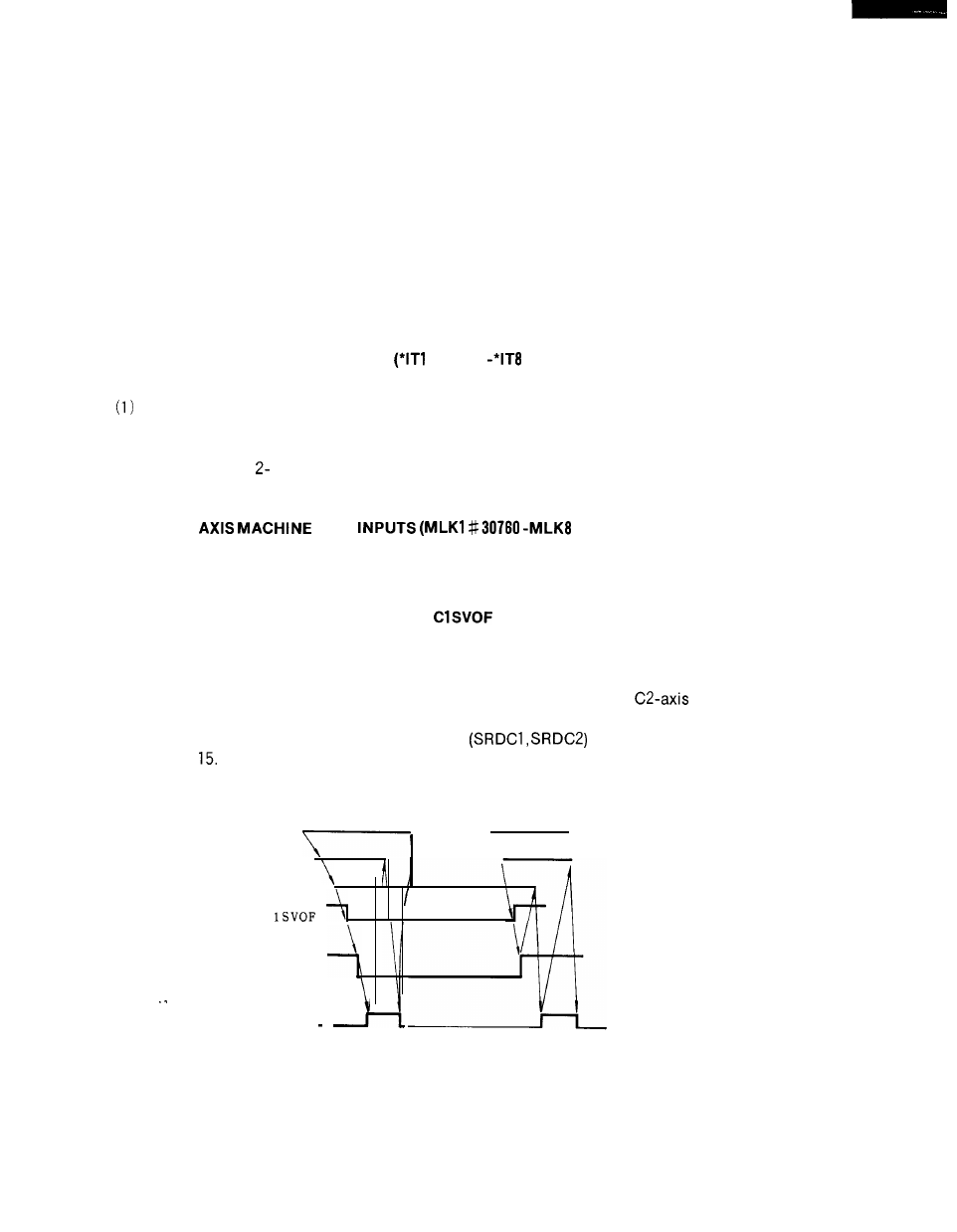Yaskawa i80M Connecting Manual User Manual
Page 272

To reset the “opened” overtravel input, move the axis in a direction opposite to that of the
opened overtravel input in the manual operation mode (manual jog, manual pulse generator) to
close the input, and perform the “reset” procedure to clear the alarm output and display.
NOTE
Even when the overtravel input opens, the M code, S code, T code, and
reading outputs
MF and TF do not turn OFF.
If it is necessary to interrupt an M, S, or T code based operation be-
cause of overtravel, effect interlock in accordance with an external
sequence.
21. 3.3.4 AXIS INTERLOCK INPUTS
#30780
#30787)
These interlock inputs are provided for all axes and used to prohibit axis movement.
When the axis interlock opens during axis movement, the axis decelerates to a stop.
When the interlock is closed later, the machine performs the remaining operation and then
proceeds to the next block.
(2) As regards the
or 3-axis simultaneous interpolation command, the machine prohibits in-
terpolation, decelerates, and stops if the interlock for one axis opens.
21. 3.3.5
LOCK
#30767)
These signals are used to machine-lock the axes independently.
For instance, when the MLK3 input is closed, only the third axis machine lock turns ON.
21. 3.3.6 C-AXIS SERVO OFF SIGNALS (*
# 30796, *C2SVOF #30797)
These signals are used when heavy-duty or other cutting operations are to be performed with
the C-axis mechanically clamped.
When the
●
Cl SVOF or
●
C2SVOF signal contact opens, the Cl - or
servo lock is re-
leased.
For machine clamping purposes, use the M or like function. The servo OFF, mecha-
nical clamp, auxiliary function, and servo ready
signal time chart is presented
in Fig. 21.
The clamp command output must be generated after positioning signal (DEN)
transmission.
(M
CODE)
CLAMP COMMAND
UNCLAMP COMMAND
‘ F
\
MECHANICAL CLAMP
*C
SRDC 1
“ N
Fig. 21.15 Servo OFF Signal Time Chart
With a parameter,
it is possible to perform follow-up processing
servo OFF.
for the C axes at the time of
272
